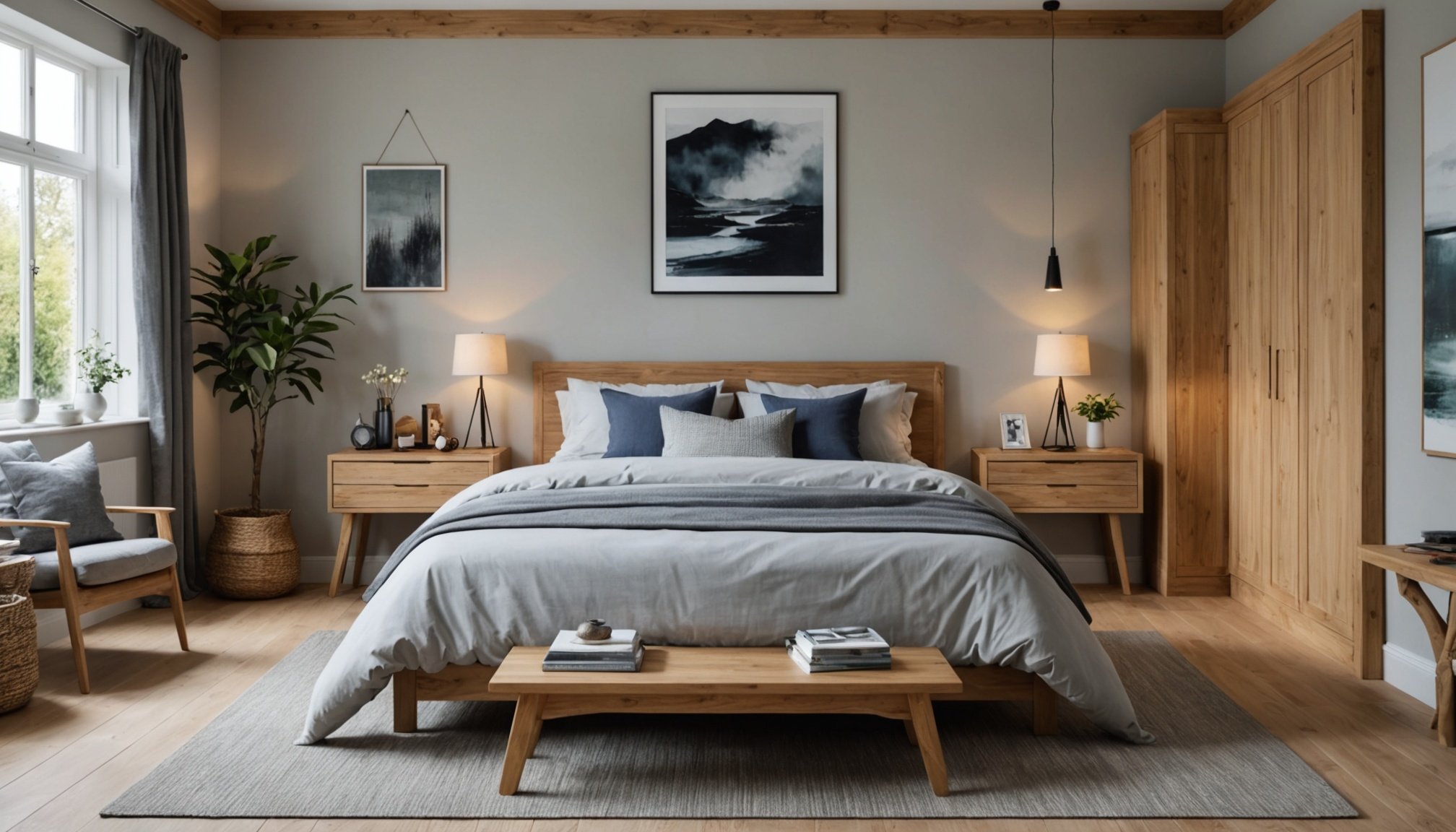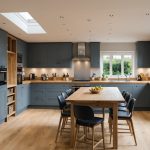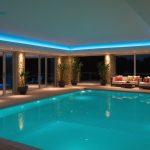Understanding Zen Aesthetics
Zen-inspired design is pivotal in crafting calming environments and harnessing tranquility within our living and working spaces. Central to this design philosophy is the principle of creating spaces that evoke a sense of peace and well-being. But what exactly defines Zen aesthetics?
At its core, Zen design emphasizes simplicity, minimalism, and the integration of natural elements. The idea is to strip back unnecessary distractions and focus on what truly matters, nurturing tranquility. This approach often involves using natural materials like wood, stone, and bamboo, which help bring the outside in, fostering a connection to the natural world. Elements like minimalistic furniture and earthy colours are also quintessential in enhancing such settings.
This might interest you : Top Materials for Creating a Long-lasting and Chic Kitchen Backsplash in the UK
Japanese culture has significantly influenced the adoption of Zen aesthetics in Western spaces. It introduces traditional elements such as tatami mats, sliding shoji screens, and rock gardens. These components help exude balance and harmony, integral to Zen philosophy.
Incorporating Zen-inspired designs in modern spaces continues to grow in popularity, not only for its aesthetic appeal but for its profound ability to promote calmness and mindfulness in our everyday lives.
Also to see : Essential Insights for Seamlessly Adding a Mezzanine to Your UK Loft Conversion
Essential Color Schemes for a Zen Bedroom
Creating a Zen bedroom relies heavily on the choice of color palettes. Calming hues are essential for evoking tranquility and peace. To foster a relaxed environment, consider opting for serene colors such as soft greens, muted blues, gentle greys, and warm neutrals. These tones promote relaxation and mental clarity, making them ideal for any restorative space.
Combining these calming hues can further enhance the harmonious feel of your bedroom. A thoughtful blend of colors, like pairing a muted blue feature wall with neutral bedding, helps maintain balance and encourages restfulness. To achieve this, opt for a primary calming color and use complementary hues sparingly to avoid overwhelming the senses.
In the UK, there are regional color preferences that reflect local interpretations of a Zen aesthetic. Southern areas often lean towards warmer neutrals inspired by coastal environments, while northern regions may favour cooler hues due to their cooler climates. Understanding these preferences can help shape your color choices and ensure they align with the Zen principles of balance and harmony.
Key Tips:
- Use a primary serene color and accentuate with complementary tones
- Consider regional preferences to enhance your Zen-inspired bedroom design
Furniture Choices for Zen Spaces
Creating a Zen space involves choosing furniture that embodies simplicity and tranquility. Minimalist furniture is key in achieving a harmonious atmosphere. It typically features clean lines and an uncluttered aesthetic, which aids in reducing stress and promoting relaxation. When selecting pieces, lean toward designs that are both functional and aesthetically pleasing without unnecessary embellishments.
Next, emphasise the use of natural materials. Furniture made from wood, bamboo, or other organic resources fosters a connection with nature. These materials not only complement a minimalist design but also contribute to a serene and balanced environment. The tactile and visual qualities of natural materials enhance comfort, making your Zen space more inviting.
Consider the sustainability aspect of your furniture choices. Opting for locally sourced options in the UK not only supports environmental goals but also contributes to reducing your carbon footprint. It is crucial to verify that the materials come from sustainable sources, ensuring that the beauty of natural furniture is preserved for the future.
- Types of furniture to consider:
- Low-profile seating
- Simple wooden tables
- Shelving units in natural tones
Choosing the right furniture allows you to establish a peaceful and rejuvenating Zen space.
Lighting Strategies to Evoke Calmness
Creating a serene environment in a bedroom is significantly influenced by ambient lighting. When discussing the role of light, it is essential to consider both natural light and soft illumination. Providing a calming atmosphere involves harnessing the gentle nuances of light in a manner that elicits tranquillity.
Maximizing natural light is a primary consideration. To do this, consider various techniques such as positioning mirrors strategically to reflect sunlight and allowing the light to permeate throughout the room. Translucent curtains can also be employed to diffuse and gently filter incoming daylight. By leveraging these methods, the room feels more open and inviting.
When natural light dims or is unavailable, the strategic placement and choice of lamps are crucial for achieving soft illumination. Opt for lamp styles with diffused shades to distribute light more evenly. Position bedside lamps at lower levels to create a cocoonlike ambiance, while accent lights can gently highlight specific features in the room.
Paying attention to these lighting strategies not only aesthetically enhances a space but also supports a calming atmosphere conducive to rest and relaxation, providing an inviting escape from the hustle and bustle of daily life.
Accessory Selection to Enhance Zen Vibe
Creating a serene Zen atmosphere in your space can be profoundly affected by the choice of decor accessories. Selecting the right accessories is essential to promote relaxation and tranquillity. Incorporating calming elements like indoor plants not only boosts the aesthetic appeal but also has a positive effect on mood and air quality. Plants naturally filter harmful toxins from the air, creating a healthier environment and fostering a sense of peace.
When it comes to artwork, choose pieces that evoke calm and serenity, reinforcing the peaceful vibes of your space. Art has the power to influence emotions significantly, so selecting artwork that aligns with a tranquil atmosphere is crucial. Think of minimalist art or scenes of nature that can provide a calming focal point in your room.
A balanced combination of decor accessories contributes to creating a sanctuary that feels naturally peaceful. Here are a few tips for selecting accessories:
- Opt for materials that feel natural and earthy.
- Incorporate neutral tones to maintain a cohesive look.
- Introduce textures that add warmth without overwhelming the space.
In essence, thoughtfully chosen decor accessories, including plants and artwork, help craft an environment that nurtures calmness and inspires relaxation.
Layout Planning for Optimal Serenity
Creating a peaceful environment begins with intentional space layout and thoughtful furniture arrangement. Whether you live in a bustling city flat or a cozy countryside cottage, arranging your space can significantly influence your mood and comfort.
Start by prioritising the flow of your space. This means ensuring that pathways are clear and that movement from one area to another feels natural and unobstructed. Avoid blocking windows with large pieces of furniture to maintain a sense of openness and maximise natural light.
Decluttering is paramount. A cluttered space can lead to a cluttered mind. Strive to maintain open spaces, reducing stress and promoting relaxation through simplicity. Store items neatly and only keep what is necessary in everyday view.
Consider classic UK home layouts where smaller rooms benefit greatly from strategic arrangements. For instance, in a narrow living room, placing a sofa against a wall can free up floor space, enhancing the room’s airiness. Moreover, a round dining table can ease the flow in tight dining areas.
For a zen balance, embrace minimalism with intentional decor choices. Subtle colours and natural materials can elevate tranquillity, and thoughtful space layout creates an environment conducive to relaxation and mindfulness.
Incorporating Nature into Your Zen Bedroom
Embracing biophilic design in your Zen bedroom creates a calming oasis and strengthens your connection to nature. The incorporation of natural elements such as plants or organic materials can significantly enhance your well-being by reducing stress and improving air quality.
One benefit of integrating natural elements is the improvement in mental health. The presence of greenery is known to reduce anxiety, fostering a serene atmosphere essential for rest. Moreover, indoor plants can purify the air by filtering out toxins, creating a healthier environment.
Creating a biophilic impact in small spaces can be both innovative and rewarding. Consider hanging planters filled with cascading greenery or using vertical plant walls to maximise space. Choosing the right local UK plants is equally important for a Zen-inspired bedroom. Ferns, known for their air-purifying abilities, or peace lilies, which thrive in low light, are excellent choices.
Additionally, indoor gardens can contribute to your room’s tranquillity. Even a small tabletop garden, with stones or moss, can instil a sense of peace and nature-bound harmony. By incorporating these natural elements, you are not only transforming your bedroom but also nurturing yourself with the countless benefits of nature.
Practical Sourcing Tips for UK Homes
Incorporating sustainable materials into your home design is essential for an environmentally conscious lifestyle. Fortunately, the UK offers an abundance of opportunities to find eco-friendly products. Begin your search with local sourcing by visiting nearby artisans and markets. Local craftsmen often utilise sustainable methods and materials, which supports both the community and the environment.
When seeking out Zen-inspired décor, consider visiting independent stores that showcase unique handmade items. These stores frequently collaborate with artisans who prioritise eco-friendly practices. This approach not only enhances your home’s aesthetic but also aligns with sustainable commitments.
Cost-effective sourcing is achievable without sacrificing style. Look for second-hand shops that offer pre-loved furniture and décor. Many times, these items are robust and well-crafted, making them a sustainable choice. Additionally, explore online marketplaces dedicated to eco-conscious living; they often provide access to second-hand or sustainably produced goods.
Being strategic about sourcing can lead to an impressive yet environmentally friendly home. By prioritising sustainable materials and supporting local artisans, one can achieve a balance between style, environmental responsibility, and affordability. Discover these innovative ways to create your ideal sanctuary with an eco-friendly focus.
Visual Inspiration and Case Studies
Finding design examples that embody the Zen bedroom style can spark creativity and guide you in achieving this serene aesthetic. Across the UK, several Zen-inspired real-life applications serve as excellent templates. These spaces often feature minimalist furniture, natural materials like bamboo or cedar, and soft, neutral colours that evoke tranquillity.
Examining successful Zen-inspired bedroom designs, you’ll notice consistent use of visual elements such as tatami mats, shoji screens, and low-profile beds. These integrate seamlessly with the Zen aesthetic, promoting a calming and clutter-free environment. Natural light is maximised, allowing for an open, airy feel, while elements like simple potted plants add a touch of vitality without overwhelming the senses.
For those seeking more inspirational ideas, a wealth of resources is available. Blogs dedicated to Zen living provide myriad insights into achieving balance and simplicity. Magazines showcase curated real-life applications in stylish spreads, while social media platforms often feature user-generated content that offers fresh perspectives on Zen design. Engaging with these resources allows you to explore different styles and implementations, empowering you to design a Zen-inspired bedroom that truly resonates with your personal taste.











